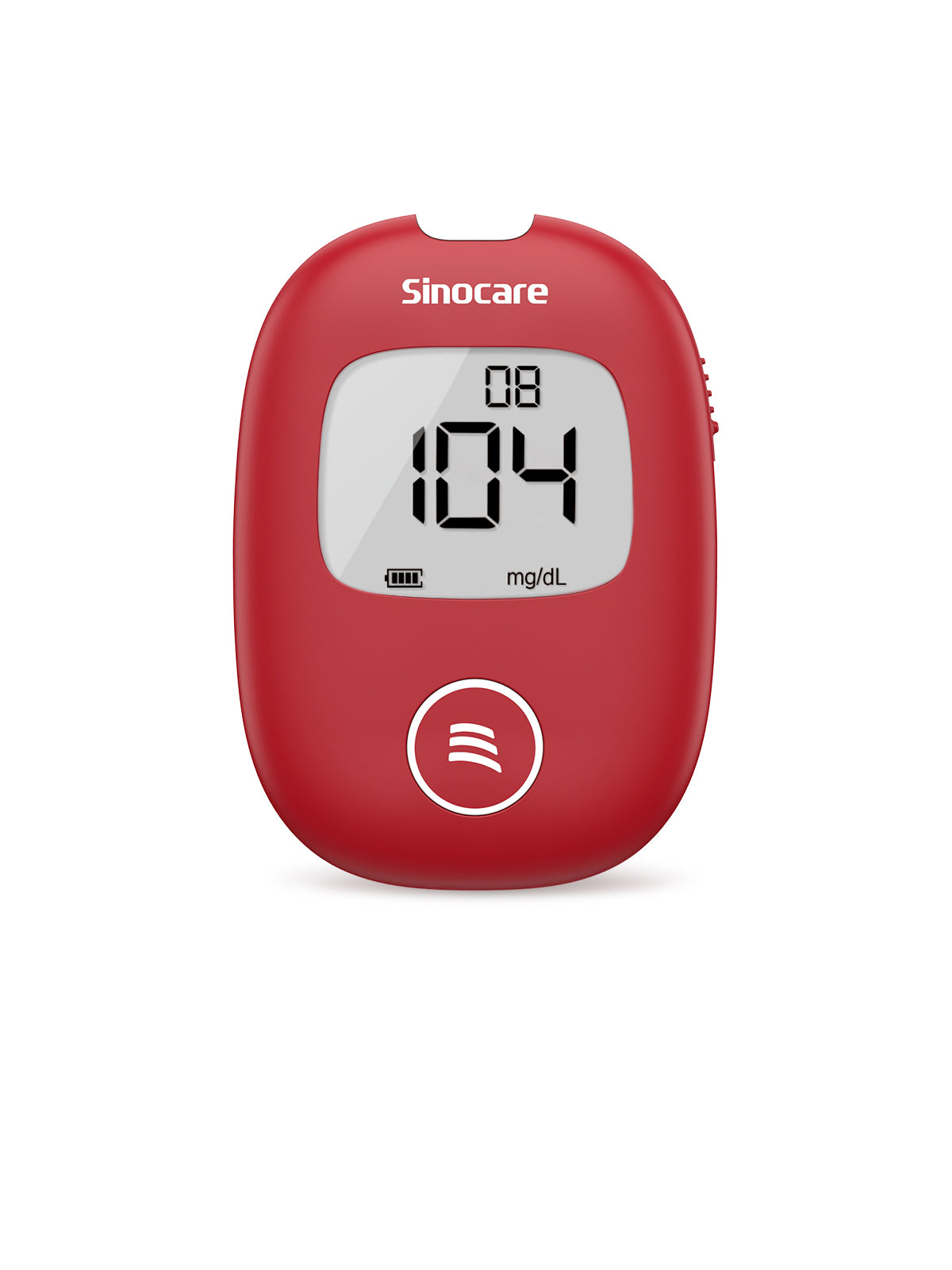Managing blood sugar levels is crucial for individuals diagnosed with diabetes or those at risk of developing it. However, despite testing blood sugar diligently, many people inadvertently make mistakes that can undermine their efforts.

Only testing fasting blood sugar
Many people with diabetes do not prioritize postprandial blood sugar monitoring and typically only test their fasting blood sugar levels. However, in the early stages of diabetes, postprandial blood sugar elevation often precedes fasting blood sugar elevation. Paying attention to postprandial blood sugar levels can help detect diabetes early.
Moreover, monitoring postprandial blood sugar levels is essential for evaluating the effectiveness of dietary control. Otherwise, everything might seem fine based solely on subjective feelings. More importantly, the risks associated with postprandial hyperglycemia are greater than those of fasting hyperglycemia. Prolonged elevation can lead to atherosclerosis, causing the blood vessel walls to become fragile and prone to rupture, increasing the risk of conditions like heart attacks and strokes by at least 5-10 years.
Furthermore, symptoms of cardiovascular blockage typically manifest only when the blockage exceeds 75%. Even if there are no apparent symptoms, damage is occurring continuously. It's crucial not to become complacent!
Blood sugar 2 hours after meal
Is postprandial blood sugar at 2 hours the same as blood sugar 2 hours after finishing a meal? Why is it essential to measure blood sugar levels at this specific time?
Postprandial blood sugar at 2 hours refers to the blood glucose level measured 2 hours after taking the first bite of a meal, not after finishing the meal. It reflects the reserve function of a patient's pancreatic beta cells and indicates whether the meal and medication dosage are appropriate.
Many diabetic patients complain that they feel extremely hungry when they eat less and don't notice any symptoms when their blood sugar levels are high. They may become accustomed to higher levels over time, but this complacency is dangerous and should be avoided at all costs.
Irregular monitoring of glycosylated hemoglobin
Doctors often recommend that individuals with diabetes undergo regular blood tests at hospitals. This is because fasting blood sugar and postprandial blood sugar levels only reflect the blood glucose levels at specific times.
Glycated hemoglobin, on the other hand, reflects the average blood sugar levels over the past 2-3 months. While it's essential to know blood sugar levels at specific points in time, understanding the average blood sugar levels over a period is equally crucial.
Individuals with diabetes should adhere to regular monitoring of glycated hemoglobin. Typically, this involves getting tested every 3-6 months, to keep glycated hemoglobin levels below 6.

Measuring blood sugar once in a long time
Some individuals with diabetes, out of concern for expenses, convenience, or sheer indifference, tend to test their blood sugar levels very infrequently. This practice is highly inadvisable. After all, blood sugar monitoring is a crucial component of diabetes management, serving as the cornerstone for guiding other treatments.
For those with more severe conditions or significant blood sugar fluctuations, a comprehensive understanding of the disease often necessitates testing blood sugar levels on two full days each week. This includes fasting (or pre-meal), postprandial (after meals), bedtime, and 3 a.m. blood sugar levels. Even for those whose blood sugar levels remain relatively stable, regular monitoring is still essential.
Relying on self-perception instead of blood sugar monitoring
When it comes to managing diabetes, individualization is paramount. Therefore, if individuals with diabetes rely solely on their own perceptions to judge their blood sugar levels, the true level of glycemic control can be obscured.
Some individuals with diabetes, particularly those with longstanding conditions, may have high blood sugar levels without experiencing obvious symptoms. If this hyperglycemic state remains undetected and uncontrolled, the risk of complications significantly increases. Hence, individuals with diabetes must never rely solely on perception to decide whether or not to monitor their blood sugar levels!
High fasting blood sugar: should i increase medication directly?
Many individuals with diabetes often ask "Why are my other blood sugar levels fine, but my fasting blood sugar is comparatively high?" In reality, there are two main reasons for elevated fasting blood sugar:
Dawn phenomenon: The "dawn phenomenon" refers to a phenomenon where a patient's blood sugar is well-controlled during the first half of the night and does not experience hypoglycemia overnight. However, starting from around 2:00 to 3:00 in the morning, blood sugar gradually begins to rise. If blood sugar is normal at 3:00 a.m. but rises in the morning, it is considered the "dawn phenomenon."
Response: To address this, it's important to monitor blood sugar levels during the night. Once the dawn phenomenon is confirmed, follow medical advice to increase the dosage of long-acting antidiabetic medications before dinner or before bedtime.
Somogyi effect: Also known as rebound hyperglycemia, refers to transient hypoglycemia caused by excessive doses of hypoglycemic agents (especially insulin) or prolonged fasting, followed by a subsequent increase in blood sugar levels.
Response: If experiencing high fasting blood sugar levels accompanied by frequent nightmares and cold sweats during the night, it's essential to monitor blood sugar levels overnight, typically around 3:00 a.m. If hypoglycemia occurs, adjustments to diet and medication are necessary. This may involve adding a snack before bedtime or reducing the dosage of long-acting medications taken before sleep or dinner.
However, distinguishing between the two conditions requires additional monitoring of overnight blood sugar levels. Rushing to increase medication dosage without proper evaluation can be detrimental.
Final thoughts
In conclusion, managing blood sugar levels requires a comprehensive approach that goes beyond simply testing fasting blood sugar. Regular monitoring of postprandial blood sugar, glycosylated hemoglobin, and periodic assessment of blood sugar trends throughout the day and night are essential for effective diabetes management. Relying solely on self-perception or infrequent testing can lead to complications and undermine treatment efforts. By understanding common mistakes and adopting a proactive approach to monitoring blood sugar levels, individuals with diabetes can better control their condition and reduce the risk of long-term complications.










Laisser un commentaire
Tous les commentaires sont modérés avant d'être publiés.
Ce site est protégé par hCaptcha, et la Politique de confidentialité et les Conditions de service de hCaptcha s’appliquent.